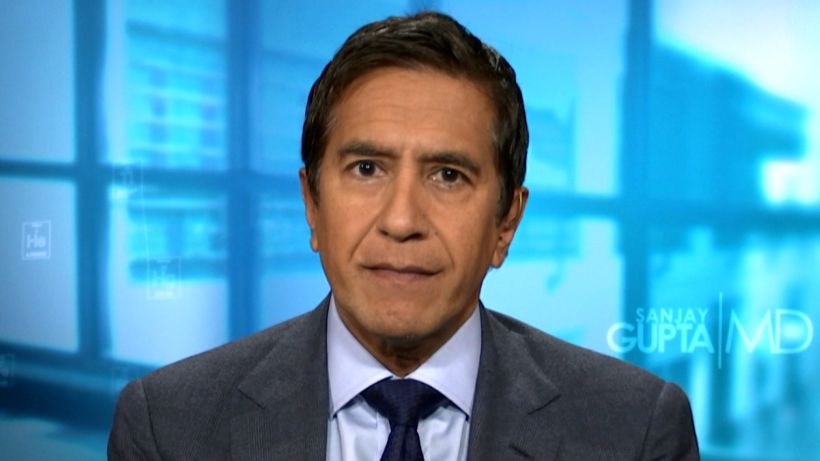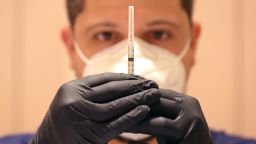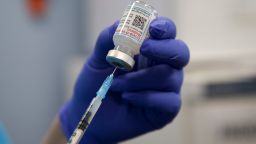The US Food and Drug Administration on Wednesday authorized updated Covid-19 vaccine booster shots from Moderna and Pfizer. This is the first time updated Covid-19 vaccines have received emergency use authorization in the United States.
Both are bivalent vaccines that combine the companies’ original vaccine with one that targets the BA.4 and BA.5 Omicron sublineages.
Pfizer’s updated vaccine is a 30-microgram dose authorized for people age 12 and older. Moderna’s updated vaccine is a 50-microgram dose authorized for people age 18 and older.
The shots can be administered after they’re recommended by the US Centers for Disease Control and Prevention. The CDC’s vaccine advisory group is scheduled to vote Thursday on whether to support recommending the boosters for use. Then, the CDC director must sign off on the recommendation.
An OK from the CDC would mean updated boosters could be administered within days – both to older people who may have received a booster just a few months ago and younger people who haven’t been eligible for an additional booster during the latest wave of cases.
Booster shift
The updated vaccines do not replace shots for the primary series, but they do replace the booster people older than 12 receive.
“With today’s authorization, the monovalent mRNA COVID-19 vaccines are not authorized as booster doses for individuals 12 years of age and older,” the FDA said.
Individuals ages 12 and up are eligible for the Pfizer bivalent booster if they have received their primary series and it has been at least two months since their last vaccine dose. Individuals ages 18 and up are eligible for Moderna boosters on the same schedule.
People too young to receive an updated booster can still be boosted with the earlier vaccine.
The FDA said it will “work quickly” to evaluate future submissions for authorization of bivalent boosters for younger people. Pfizer said in a news release it expects to submit an application for authorization of its updated booster for children ages 5 through 11 in early October, and it’s working to prepare an application for children ages 6 months through 4 years.
“We want to make sure that adults and the adolescents covered by this authorization are able to get the most up-to-date version of a booster vaccine, and that’s why we are no longer authorizing the monovalent – the original – booster for administration as a booster dose to those populations,” Dr. Peter Marks, director of the FDA’s Center for Biologics Evaluation and Research, said during a news briefing.
About two-thirds of the total US population is vaccinated against Covid-19 with an initial series, according to data from the CDC. But less than half of those with their initial series – and less than a third of the total population – has also gotten a booster.
There’s no plan yet to phase out the earlier vaccines used in the primary series, Marks said, but this is a “transitional year,” when people need to make sure they have a “good base upon which we build … which will help protect us against the unknown.”
“If you’ve not yet received a booster dose, or it’s been several months since your last booster dose, now’s the time to consider getting one,” Marks said.
Officials defend swift authorization
On Wednesday, FDA officials defended their swift emergency use authorization of the updated Covid vaccine booster. Pfizer and Moderna submitted for authorization last week.
“The public can rest assured that a great deal of care has been taken by the FDA to ensure that these updated boosters meet our rigorous safety, effectiveness and manufacturing quality standards for emergency use authorization,” Marks said.
The agency has authorized these boosters after studies in mice, but ahead of the results of clinical trials in humans.
This is similar to the way annual flu vaccines are tested each year, but it’s a first for Covid-19 vaccines. The approach has generated some controversy among vaccine experts. In making the authorization, the agency did not call a new meeting of its independent vaccine advisers, who often weigh in on vaccine changes; the advisory group had offered its insight on updating the original vaccine in meetings over the summer.
“We have been planning for and gathering input on our approach to updated boosters since earlier this year,” FDA Commissioner Dr. Robert Califf said during the news briefing. “The FDA has extensive experience with evaluating strain changes for influenza vaccines and is confident in the data supporting these latest booster authorizations.”
In addition to the animal data, the FDA said it was basing its decision on more than a year of experience with hundreds of millions of doses of mRNA vaccines given around the globe. They are also relying on human clinical trials of different bivalent vaccines that target the original Omicron strain. That vaccine has been authorized in the UK, but will not be available in the US. More than 1,400 participants were enrolled in clinical trials of the Pfizer and Moderna bivalent vaccines against BA.1.
Human studies of the bivalent boosters, which combine the companies’ original vaccine with one that targets the BA.4 and BA.5 Omicron sublineages, have started, Marks said on Wednesday. Data from those studies is expected in another month or two.
Vaccine milestone
“America is the first country in the world that has authorized a bivalent vaccine where the bivalent vaccine targets the viruses out there,” Dr. Ashish Jha, who is leading the White House Covid-19 response, said in a phone interview with CNN on Wednesday.
Get CNN Health's weekly newsletter
Sign up here to get The Results Are In with Dr. Sanjay Gupta every Tuesday from the CNN Health team.
“We try to do this every year for the flu. We almost never hit it on the mark. This has taken a lot of work by FDA. It’s been about leaning into the science, leaning into some very good modeling. And then really demanding from the companies that they produce vaccines that are going to be that are going to be matched.”
The Omicron BA.5 subvariant has dominated transmission in the United States for more than two months. Last week, it caused 89% – nearly 9 out of 10 – new Covid infections in this country, according to the latest estimates from the CDC.
A recent offshoot of the BA.4 variant, BA.4.6, has slowly grown in prevalence to claim second place. Across the country, it caused about 8% of new infections last week, but it has taken off more in the Midwest – Kansas, Iowa, Missouri and Nebraska – causing an estimated 17% of new infections there.
CNN’s Deidre McPhillips contributed to this report.

















